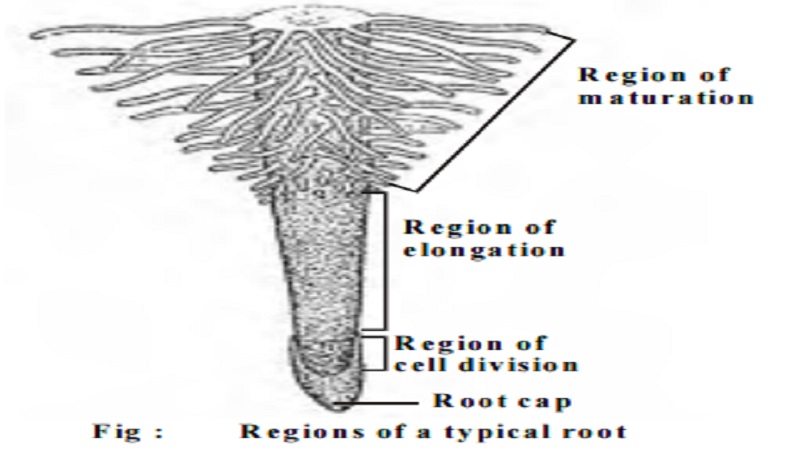Chapter: 11th 12th standard bio Biotany Plant Tree higher secondary school
Plant - Root System : Regions of a typical root and General Characteristic features of the root

Plant - Root System
The root system is typically a non-green underground descending portion of the plant axis. It gives rise to many lateral roots. The roots do not have nodes and internodes.
General Characteristic features of the root
Root is positively geotropic and negatively phototropic.
Roots are generally non-green in colour since they do not have chlorophyll pigments and hence they cannot perform photosynthesis.
Roots do not have nodes and internodes; these do not bear leaves and buds.
The lateral branches of the roots are endogenous in origin i.e they arise from the inner tissue called pericycle of the primary root.
Regions of a typical root
The following four regions are distinguished in a root from apex upwards.
Root Cap: It is a cap like structure that covers the apex of the root. The main function of the root cap is to protect the root apex.
Meristematic Zone or Zone of cell division: This is the growing tip of the root. It lies a little beyond the root cap. The cells of this region are actively dividing and continuously increase in number.
Zone of elongation: It is a region that lies just above the meristematic zone. The cells of this zone increase in size. This zone helps in the growth in length of the plant root.
Zone of cell differentiation : (Cell maturation) This is a zone that lies above the zone of elongation. In this zone the cells differentiate into different types. They form the tissues like the epidermis, cortex and vascular bundles. In this region a number of root hairs are also present. The root hairs are responsible for absorbing water and minerals from the soil.
Related Topics